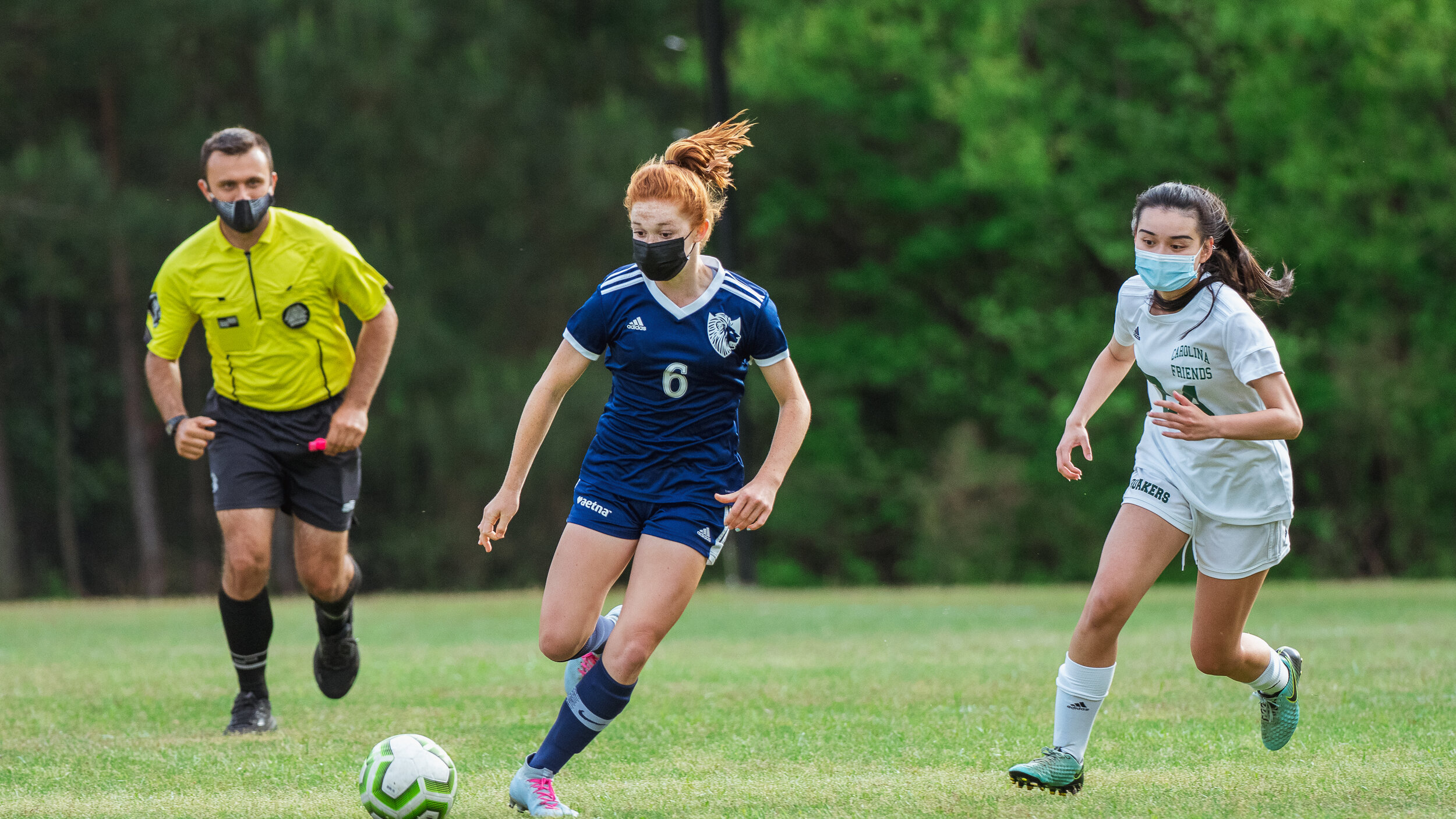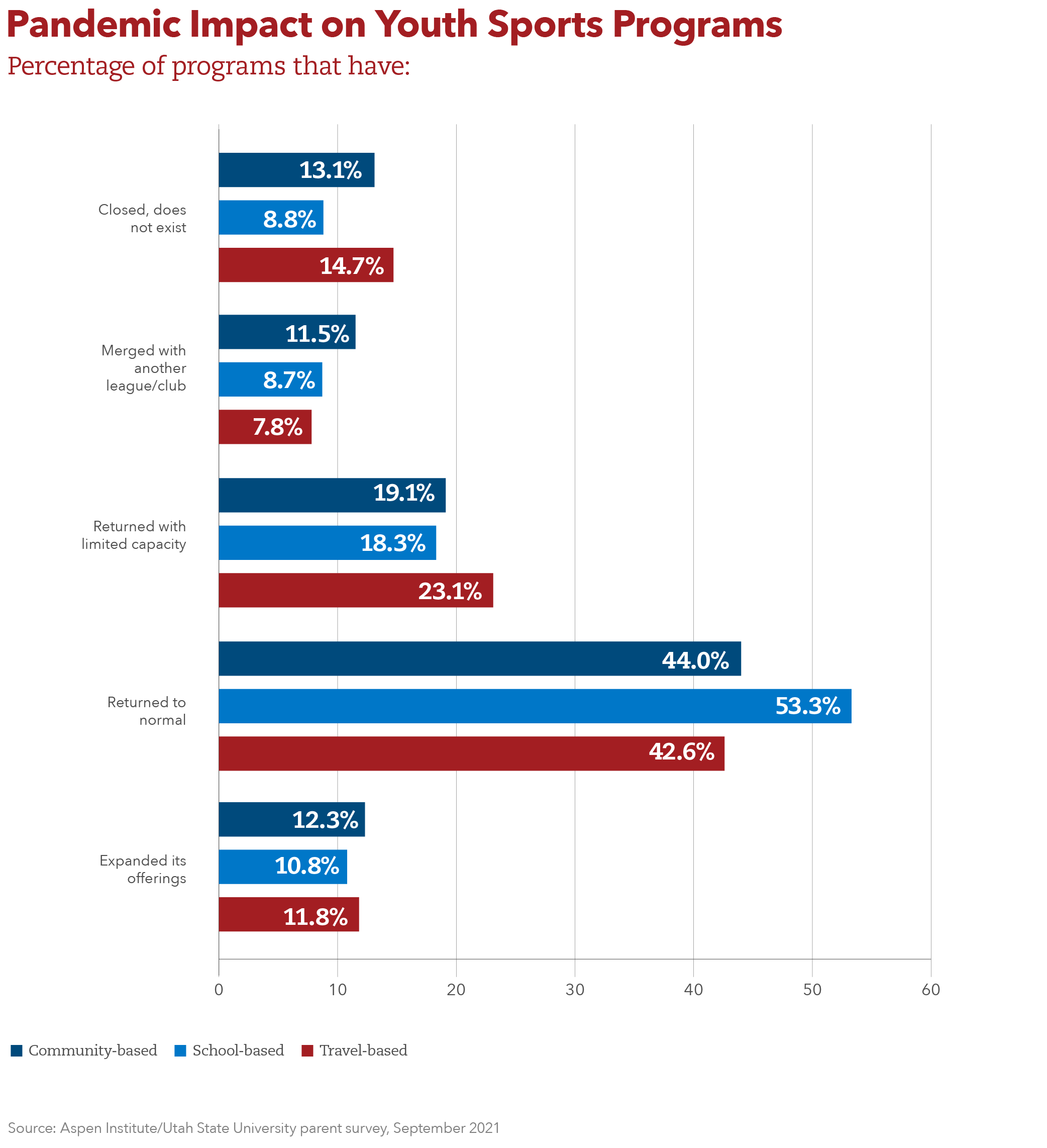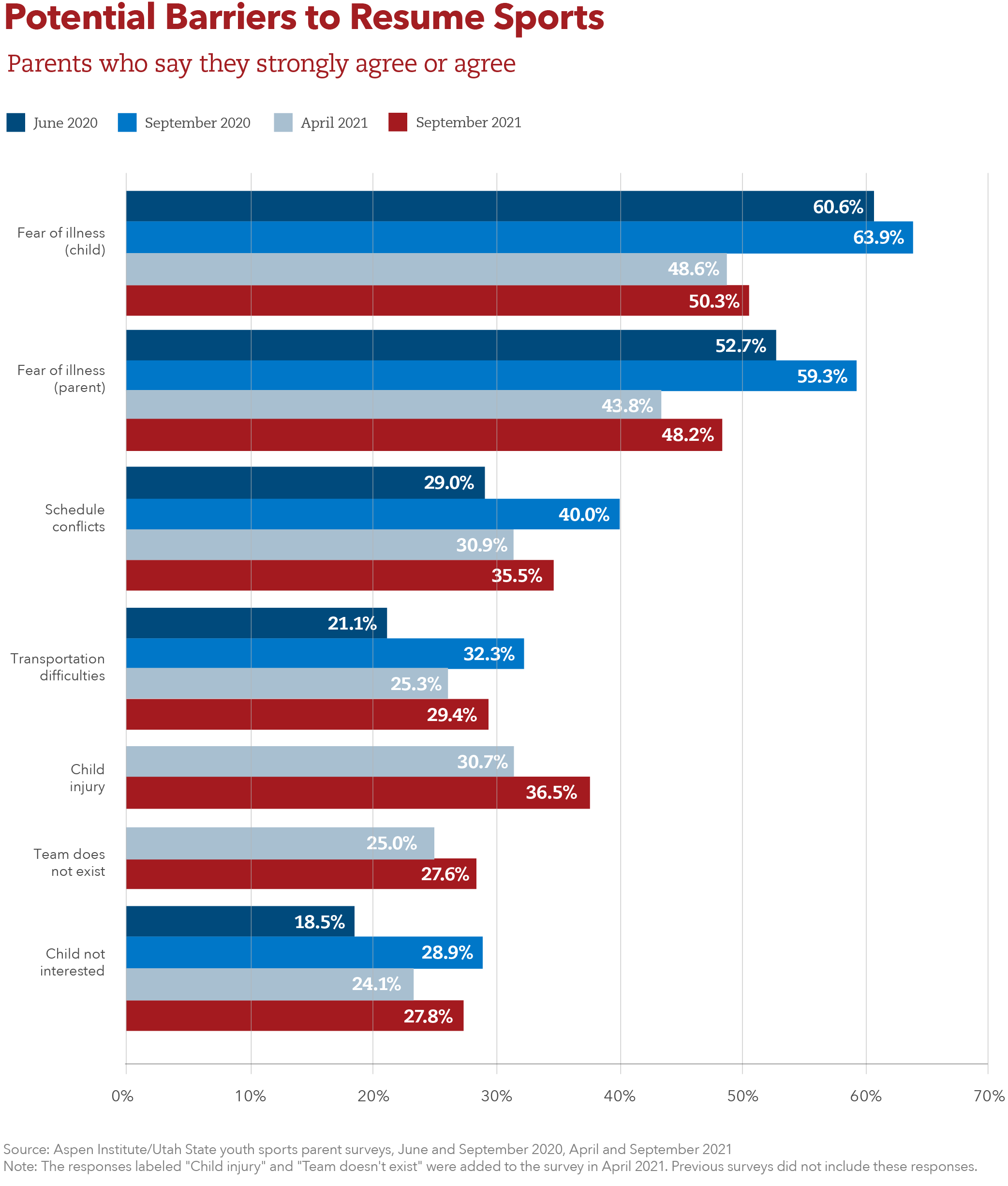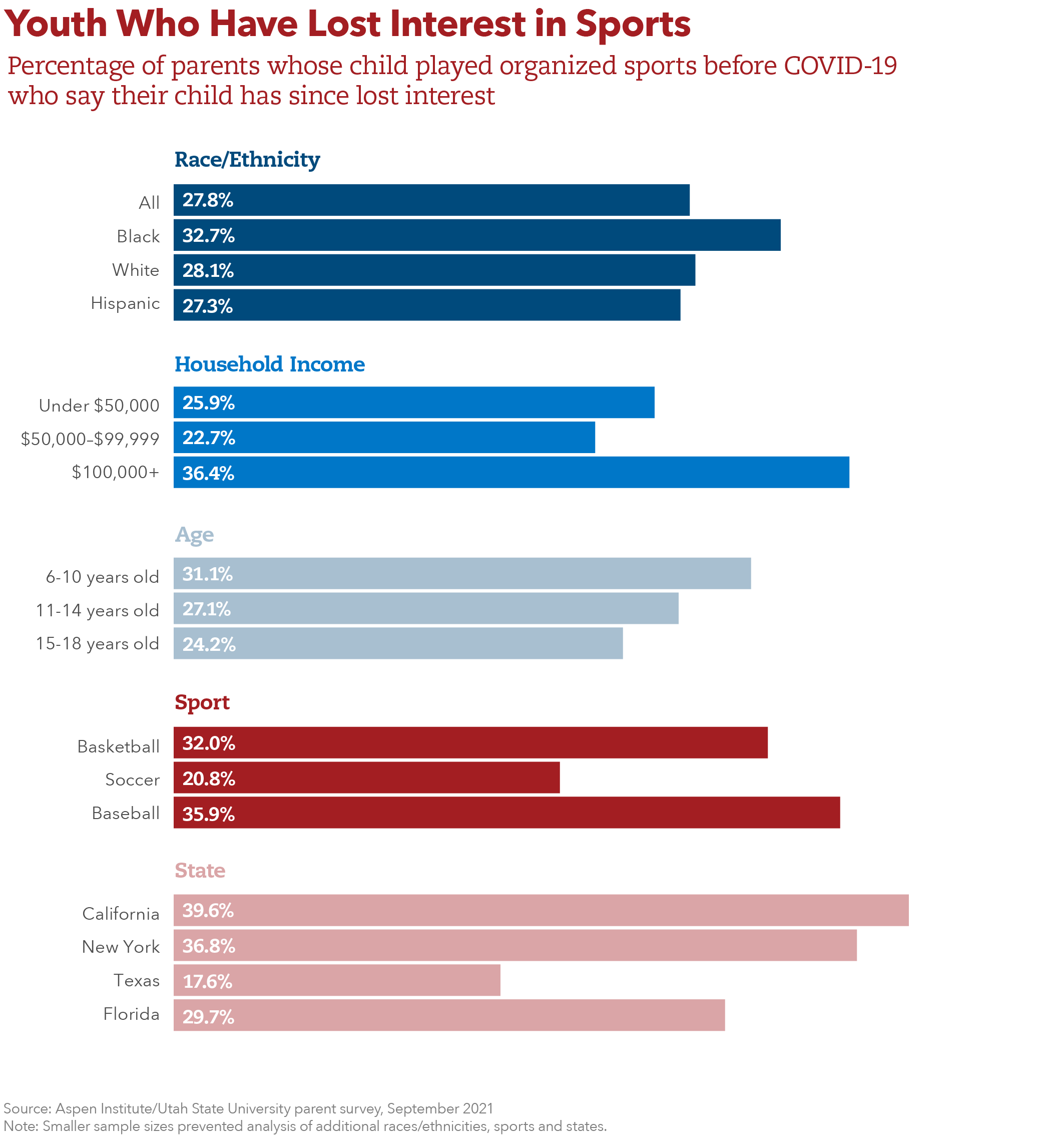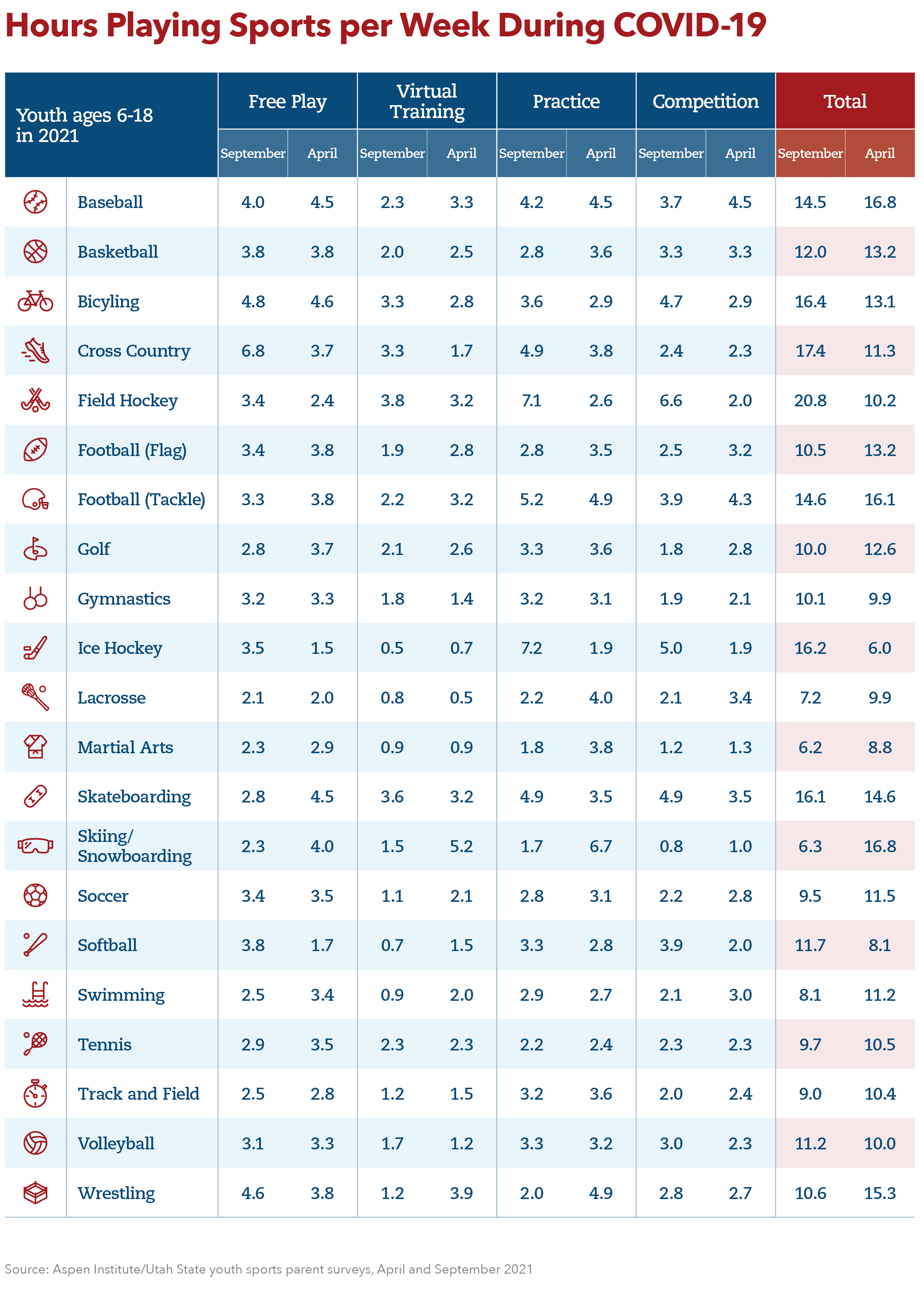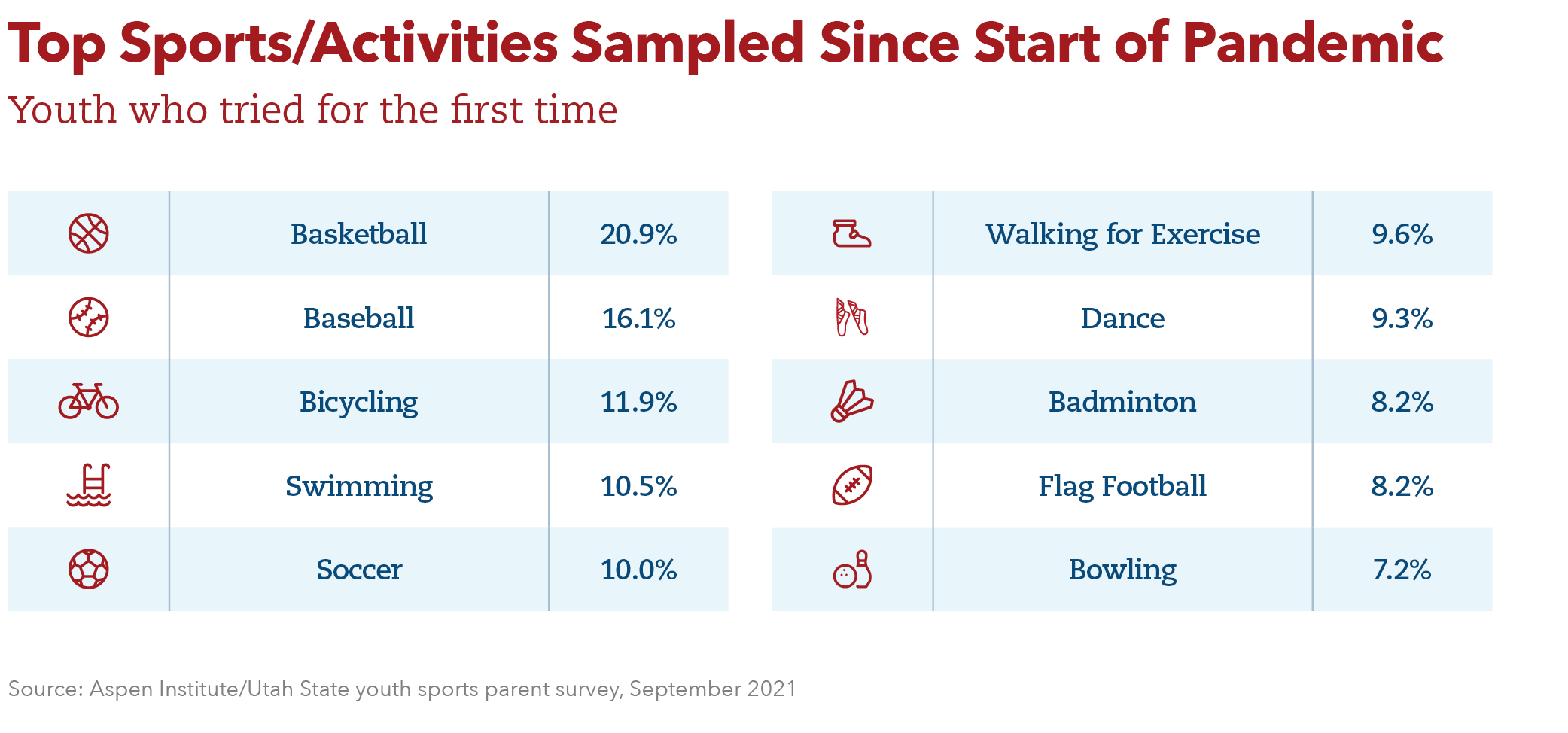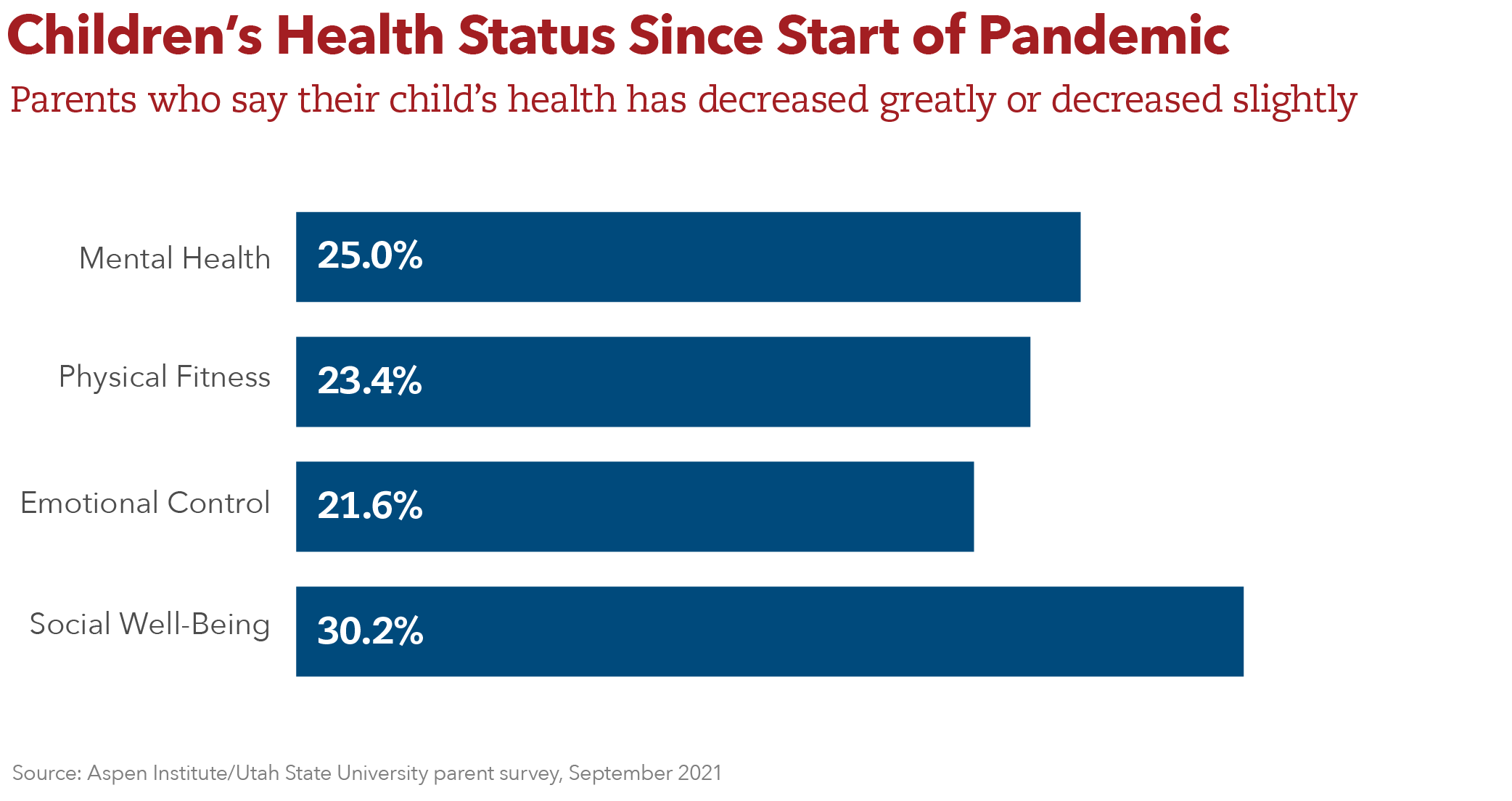Pandemic Trends
Data on this page were drawn from online surveys of youth sports parents conducted by the Aspen Institute and Utah State University to understand attitudes and behaviors before and during COVID-19. The most recent nationally representative survey was conducted from Sept. 1-17, 2021, of 1,214 parents with children between the ages of 6 and 18 who regularly play sports.
Below are charts and key findings from the latest youth sports parent survey.
The pandemic has disrupted the supply of local sports programs. Thirteen percent of youth sports parents said their community-based provider closed due to COVID-19, and another 12% said it merged with another organization. In total, 44% of families said their community-based program has either closed, merged or returned with limited capacity. This development could have a profound impact on the quality and accessibility of programs, if enough new programs do not emerge to fill the void.
44%
Families who said their community-based program has closed, merged, or returned with limited capacity
Travel sports parents report similar issues: 46% said their travel-based provider closed during COVID-19, merged with another league or club, or returned with limited capacity. More travel sports parents (15%) than community-based sports parents said their provider has closed.
School-based sports are the most likely to have resumed at a normal level. This is no great surprise as schools are supported by local or state governments and can recruit athletes within their building for teams that often have deep roots in their communities.
Fear of contracting COVID-19 continues to impact participation. Half of all sports parents view their child getting sick as a barrier to resume play. Parents who are Hispanic (58%) or Black (53%) are more likely to be worried about sports leading to illness than parents who are White (47%). Wealthier parents fear illness for their child at higher levels than lower-income families. Notable: As of September 2021, children ages 12 and under were not eligible to get vaccinated.
Parents who live in the West (60%) are more likely to fear their child getting sick; parents in the Southeast (45%) – where vaccination rates are often lowest – have the fewest concerns. Urban parents (60%) are more worried about this than rural (45%) and suburban (43%) parents.
Nearly 3 in 10 child athletes have lost interest in playing organized sports. That number has fluctuated over the past 15 months, according to our surveys of parents whose children participated in programs before COVID-19 caused a shutdown. In the latest sample, 28% of parents said their child is not interested in returning to play – up from 19% in June 2020. Just as problematic: Kids aren’t being captured at younger ages. More parents of 6- to 10-year-olds (31%) said their child isn’t interested in sports than parents of 15- to 18-year-olds (24%).
28%
Parents who reported their child is not interested in returning to play sports
Loss of interest is shaped by where a child lives. Children in California and New York are twice as likely to have lost interest than their peers in Texas, which has had some of the country’s loosest COVID-19 restrictions throughout the pandemic. Urban kids are almost twice as likely as suburban kids to no longer be interested. The more money a family has, the less interest the child has in sports.
Pickup sports remain the form of play that parents are most comfortable with for their child. But concerns about participating in organized programs are starting to lift. Parent comfort levels with travel sports, community-based sports, and school sports are the highest they have been in the Aspen Institute’s four surveys conducted since the start of the pandemic.
“Fears are not going away, but behavior is changing a little,” said Dr. Travis Dorsch, founding director of the Utah State University Families in Sport Lab. “So, parents’ calculus may be changing on how much fear it takes to keep kids out of sports season after season.”
Nearly half of Hispanic youth (47%) have resumed sports at a lower level than they were playing before the pandemic. For Black youth, it’s 42%. The trend lines are improving for these children compared to previous months but still worse than youth who are White (31% of whom have resumed sports at a lower level).
“To increase participation for Black and Hispanic youth, organizations must acknowledge the mental health impact that COVID has had in communities of color,” said Nichol Whiteman, CEO of Los Angeles Dodgers Foundation. “While the entire world felt the impact, Black and Hispanic communities experienced higher rates of serious illness along with the devastating financial impacts caused by COVID. For those already living in communities with minimal resources, the pandemic created intolerable conditions compounded by isolation. Before agencies focus on play, simultaneously the strategy should include providing the mental health support that families need through open forums and dialogue where we inform and encourage.”
The above data should be read with one obvious, important filter: Different sports are more active during different seasons of the year. A drop in hours spent in one sport or rise in hours spent in another might mean there are just more organized events scheduled. Still, there are some takeaways. Among them: Virtual training is losing its appeal. Early in the pandemic, some analysts wondered if online training was here to stay. The thought was kids might supplement practices with virtual training even when in-person activities return.
Now, it appears kids may be just as tired of Zoom as adults. Parents reported their child spent on average 1.7 hours per week on virtual training during September 2021, down 23% from April 2021, when fewer Americans (and virtually no youth) had been vaccinated yet.
Athletes in urban communities participate in significantly more hours of virtual training per week (2.3) than those in suburban and rural areas (1.3). Higher-income families reported their child are spending about one extra hour a week training virtually than lower-income homes.
Register for Project Play Summit 2021 on Oct. 19-20 here.
Kids used the pandemic to try sports that can be played outdoors. That includes team sports, especially those that more easily allow social distancing. Basketball was the biggest winner. That’s not surprising given the abundance of hoops in parks and driveways in communities across the country. Baseball was next, with 16% of parents indicating their child tried baseball for the first time, whether via organized teams or just playing catch in the backyard with parents. That’s even better than soccer, which was tried by 10% of youth.
Count biking among the winners as well, at least for the moment. Twelve percent of parents said their child tried riding a bicycle for the first time, with 10% of them expecting their child to continue with the activity. However, only 7% of parents said in September 2021 their child was regularly biking during the past year, down from 11% in April 2021. Fringe sports activities that saw a COVID bounce are now seeing regression to their average. Kids may be putting their bikes away now that more organized team sports have returned.
Health, education leaders say it’s time to vaccinate all athletes 12 and up here.
The loss of sports has hurt many children, in many ways. One in four parents said their child’s mental health suffered. Since restrictions have been lifted on sports, almost half (49%) said their child’s mental health has improved. A majority of parents also believe their child’s physical fitness, emotional control and social well-being have increased by returning to sports.
49%
Parents reported that their child's mental health has improved since restrictions have been lifted on sports
When asked how they believe different individuals and entities have responded to the pandemic, parents gave the most favorable ratings to those they know best: their child’s coach. They thought less of their sport organization and gave even lower ratings to local, state and national authorities. Parents were almost twice as likely to be very dissatisfied with their community’s reaction to COVID-19 than how their child’s coach reacted.
Two out of three parents like the approach of their child’s coach. More White parents (72%) said they are satisfied or very satisfied than those who are Black (53%) and Hispanic (59%). Most White parents (58%) indicated their coach did “very well” supporting their child’s mental health, higher than parents who are Hispanic (51%) and Black (44%).
A majority of all parents (51%) said they are “very comfortable” having their child’s coach ask if their child is struggling mentally. Parents, especially of older youth, know that they are entrusting their children to a coach for, in some cases, more hours in the day than parents themselves get with their own child.
Coaches can make or break a child’s sports experience. Coming out of the pandemic, it’s clear there’s both a need and desire for coaches to support their athletes’ mental health.
Download the full Project Play COVID-19 Parenting Survey September 2021 report here.



